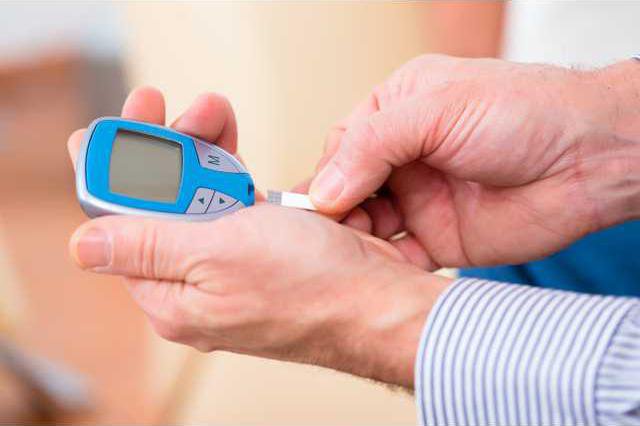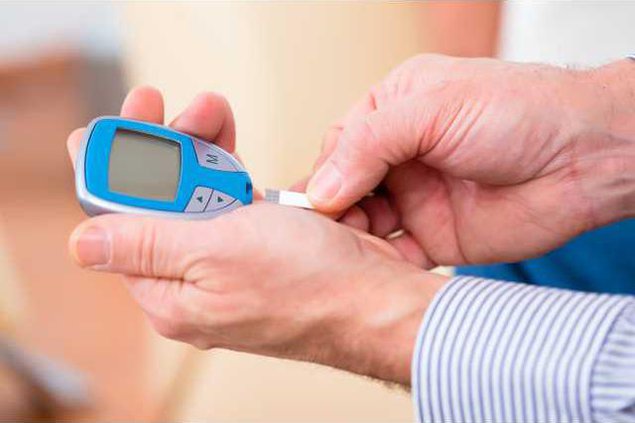Her symptoms hit hard and fast. More than anything else, my girlfriend was thirsty all the time, dropping weight and went to the bathroom frequently.
The cause? Her blood sugar levels were off the charts.
Because? Her body stopped producing insulin, and is unable to absorb sugar.
What does that mean? She has Type 1 diabetes.
Diabetes is tricky, and knowing the difference between Type 1 and Type 2 is vital information to know. Here are the basic differences:
Type 1
Type 1 diabetes (also known as juvenile diabetes) usually appears during youth. It's cause is technically unknown, but genetics are a major factor. The onset begins when the immune system mistakenly attacks insulin-producing cells in the pancreas, resulting in virtually zero insulin production. Type 1 diabetics must be given replacement insulin via frequent injections or insulin pumps.
Type 2
Type 2 diabetes is more common in adults. It's often result of a poor diet and little exercise, but can be influenced by genetics. Cells become resistant to insulin due to constant high blood sugar levels. Type 2 can be regulated with medication because the pancreas still produces insulin, but not enough to meet the body's needs. Often, people live with Type 2 unknowingly for years because symptoms can be mild.
Symptoms to watch out for
My girlfriend's symptoms for Type 1 began suddenly, but they can also start slowly in some cases. According to the American Diabetes Association, symptoms may include:
If you notice symptoms, don't freak out. Statistically, you probably don't have diabetes, but visit with your doctor if you're worried. In 2014, 9.3 percent of the U.S. population had diabetes. Type one is less common, affecting only 5-10 percent of diabetics.
Diabetes is not the end of the world. If you are diagnosed, you can still lead a normal life. The first few months can be difficult as you adapt to checking your blood sugar levels and changing your diet. Over time, you will become a pro and your body and blood sugar will thank you for taking control.
The cause? Her blood sugar levels were off the charts.
Because? Her body stopped producing insulin, and is unable to absorb sugar.
What does that mean? She has Type 1 diabetes.
Diabetes is tricky, and knowing the difference between Type 1 and Type 2 is vital information to know. Here are the basic differences:
Type 1
Type 1 diabetes (also known as juvenile diabetes) usually appears during youth. It's cause is technically unknown, but genetics are a major factor. The onset begins when the immune system mistakenly attacks insulin-producing cells in the pancreas, resulting in virtually zero insulin production. Type 1 diabetics must be given replacement insulin via frequent injections or insulin pumps.
Type 2
Type 2 diabetes is more common in adults. It's often result of a poor diet and little exercise, but can be influenced by genetics. Cells become resistant to insulin due to constant high blood sugar levels. Type 2 can be regulated with medication because the pancreas still produces insulin, but not enough to meet the body's needs. Often, people live with Type 2 unknowingly for years because symptoms can be mild.
Symptoms to watch out for
My girlfriend's symptoms for Type 1 began suddenly, but they can also start slowly in some cases. According to the American Diabetes Association, symptoms may include:
- Blurry vision
- Extreme fatigue
- Unexplained weight loss
- Small injuries heal more slowly than usual
- Hunger / thirst
- Frequent urination
- Tingling, painful or numb hands/feet (only for Type 2)
If you notice symptoms, don't freak out. Statistically, you probably don't have diabetes, but visit with your doctor if you're worried. In 2014, 9.3 percent of the U.S. population had diabetes. Type one is less common, affecting only 5-10 percent of diabetics.
Diabetes is not the end of the world. If you are diagnosed, you can still lead a normal life. The first few months can be difficult as you adapt to checking your blood sugar levels and changing your diet. Over time, you will become a pro and your body and blood sugar will thank you for taking control.








